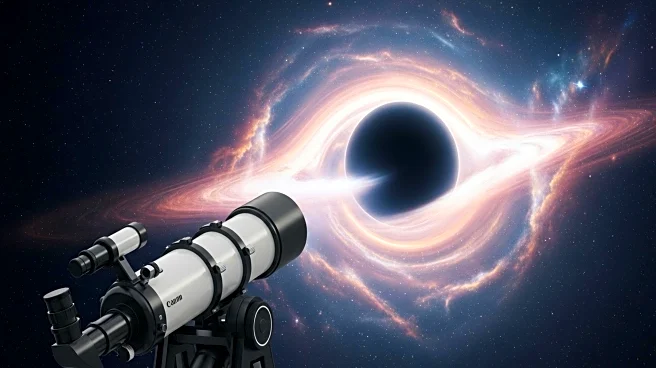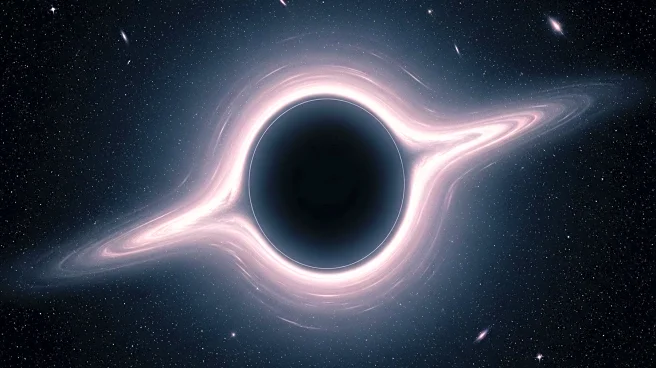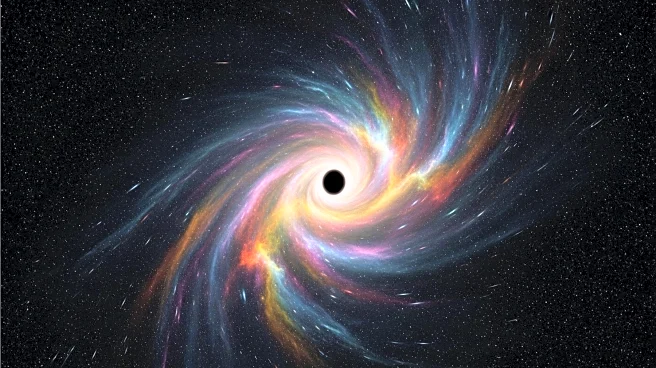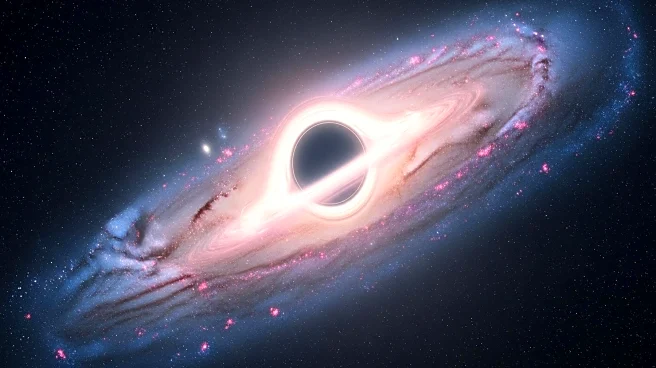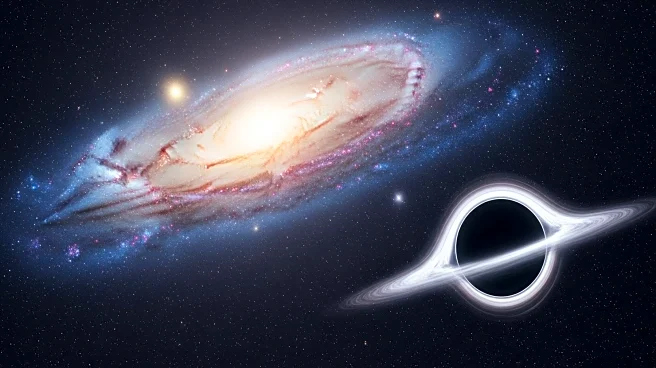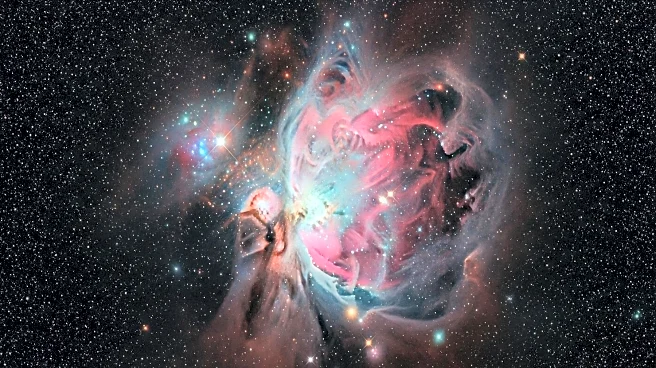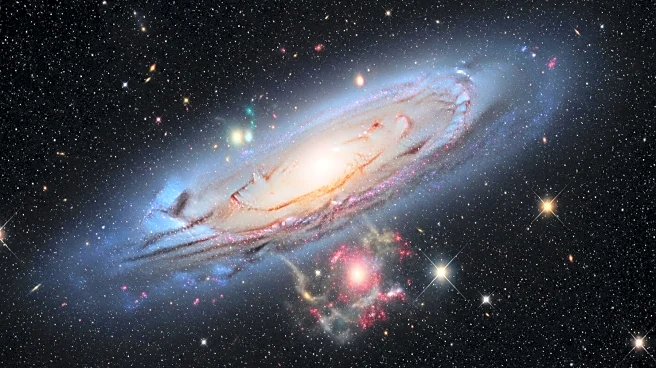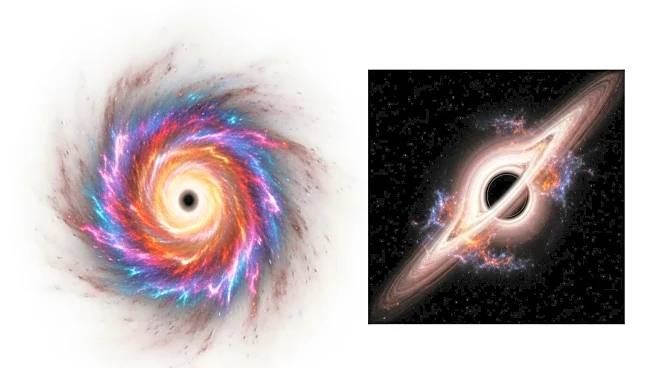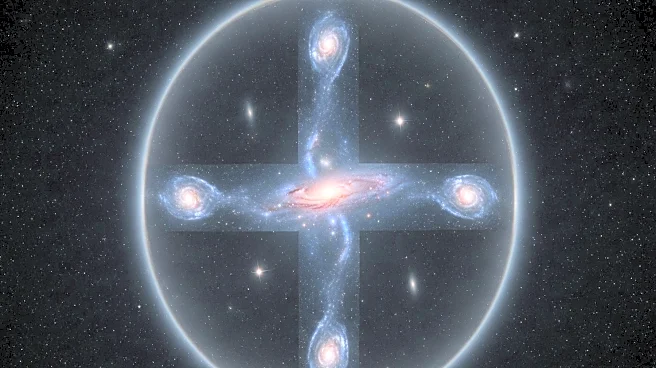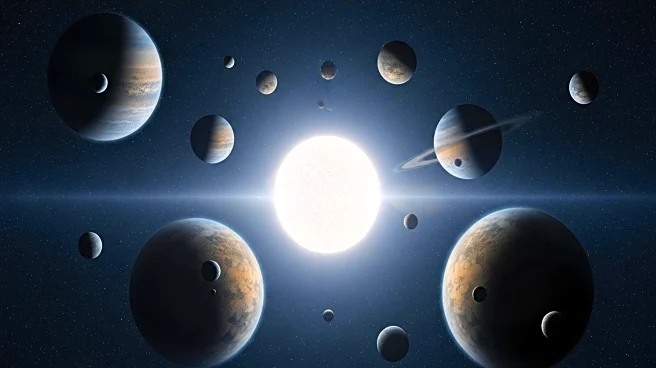What's Happening?
Astronomers using NASA's Chandra X-ray Observatory have discovered a black hole growing at an unprecedented rate. Located 12.8 billion light-years away, the black hole is part of a quasar, RACS J0320-35, and is growing at 2.4 times the Eddington limit. This rapid growth challenges existing theories on black hole formation and suggests unique conditions in the early universe.
Why It's Important?
The discovery provides insights into black hole formation and growth in the early universe. Understanding how black holes can grow rapidly helps refine models of cosmic evolution and the conditions present after the Big Bang. The findings may lead to new theories on black hole formation and the processes driving their growth. This research is crucial for astrophysics, impacting knowledge of galaxy formation and cosmic history.

